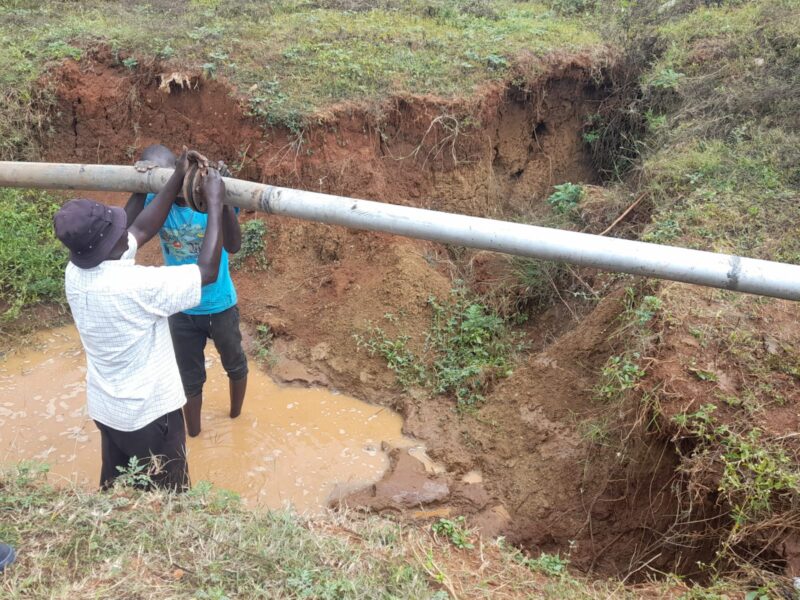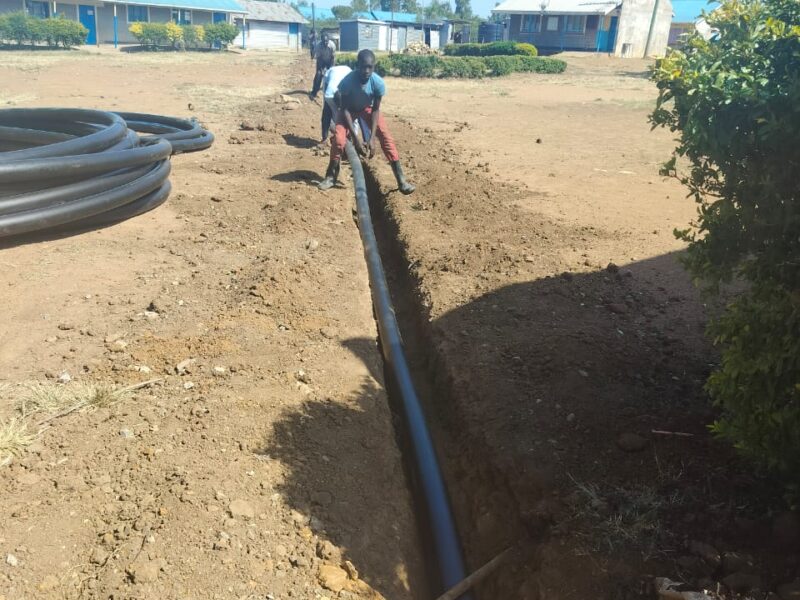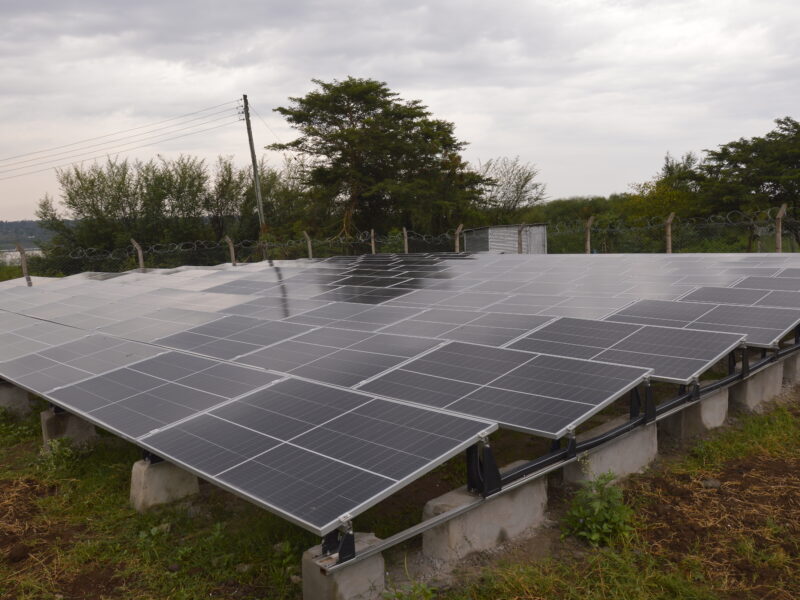In Kenya, near the town of Bondo on Lake Victoria, OffgridSun has undertaken to rehabilitate an existing aqueduct to supply around 50,000 people with drinking water. This is a self-financed project thanks to the Carbon Credit mechanism.
This is an extensive and complex construction that combines different technologies from different technical sectors, the entire water network reaches 40 km in extension!
The starting point is the intake work several meters from the coast of Lake Victoria to avoid sucking mud towards the pump, from which the dirty water from the lake is sent to the technical room where the pump is placed under head in such a way that there are no cavitation problems. This is a 30 kW vertical Grundfos pump, connected to a Nastec brand inverter specific for solar pumping applications, powered by a ground-mounted photovoltaic system, located a few meters away from 45 kW with FuturaSun FU400M Silk Premium photovoltaic panels.
The Nastec Vasco Solar inverter is equipped with a remote monitoring system, through which it is possible to check the performance of the photovoltaic system, the pump and change the settings if necessary, even from Italy. In this way it is possible to check how much water is pumped daily, how many hours the pump has worked and whether all the operating parameters are at correct values.
Subsequently, from the technical room the water is pushed for over 4.5 km through the return pipe towards the tanks located at the highest point of the area to be served. Along the pipe there are flow meters and non-return valves for allow maintenance. This pipe, which already existed before our intervention, was partially replaced with high density polyethylene pipes in the part with the highest pressure and in the damaged sections in order to guarantee greater durability.
After these tanks, the water descends by gravity through two sand filtration areas to remove physical impurities and then passes through the chlorination room where, thanks to the Dosatron components, the water becomes drinkable thanks to the injection of chlorine in quantity controlled and which varies automatically depending on the water flow. From this point on the water does not travel through pipelines and closed tanks, so that the water does not become contaminated.
The first phase of the project, completed in October 2023, saw the restoration of the existing water network and the inauguration of 10 kiosks to dispense drinking water to the population who now pay for drinking water at the same price as they previously paid for water dirty. The money collected from the sale of water is used to pay for maintenance and the salaries of local technicians and water sellers who are responsible for operating the aqueduct. The kiosks work with Lorentz-branded “smart taps”: the user brings a key loaded with water credits closer and gets water supplied as long as they keep the key resting on the tap. When the user runs out of credits, he pays the kiosk manager who loads the stick via a special smartphone app.
The second phase of the project, which will end in spring 2024, involves the extension of the water network with new sections and the opening of another 10 kiosks.
Thanks to this project, not only families but also schools and dispensaries will have access to drinking water and it is the local people who work to maintain and correctly function the entire system.
Request more information
Write to us to receive more information
Request more information
Write to us to receive more information

"*" indicates required fields













